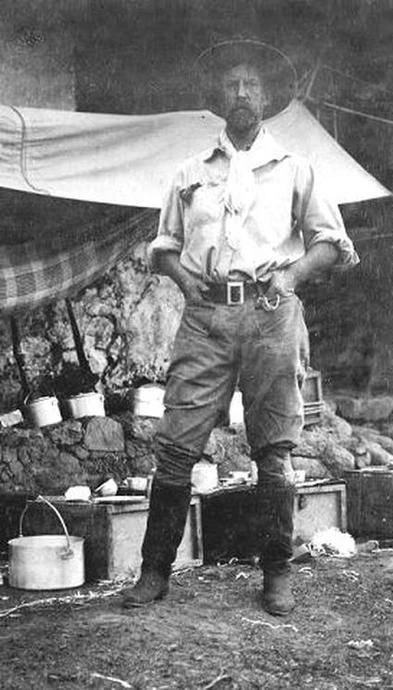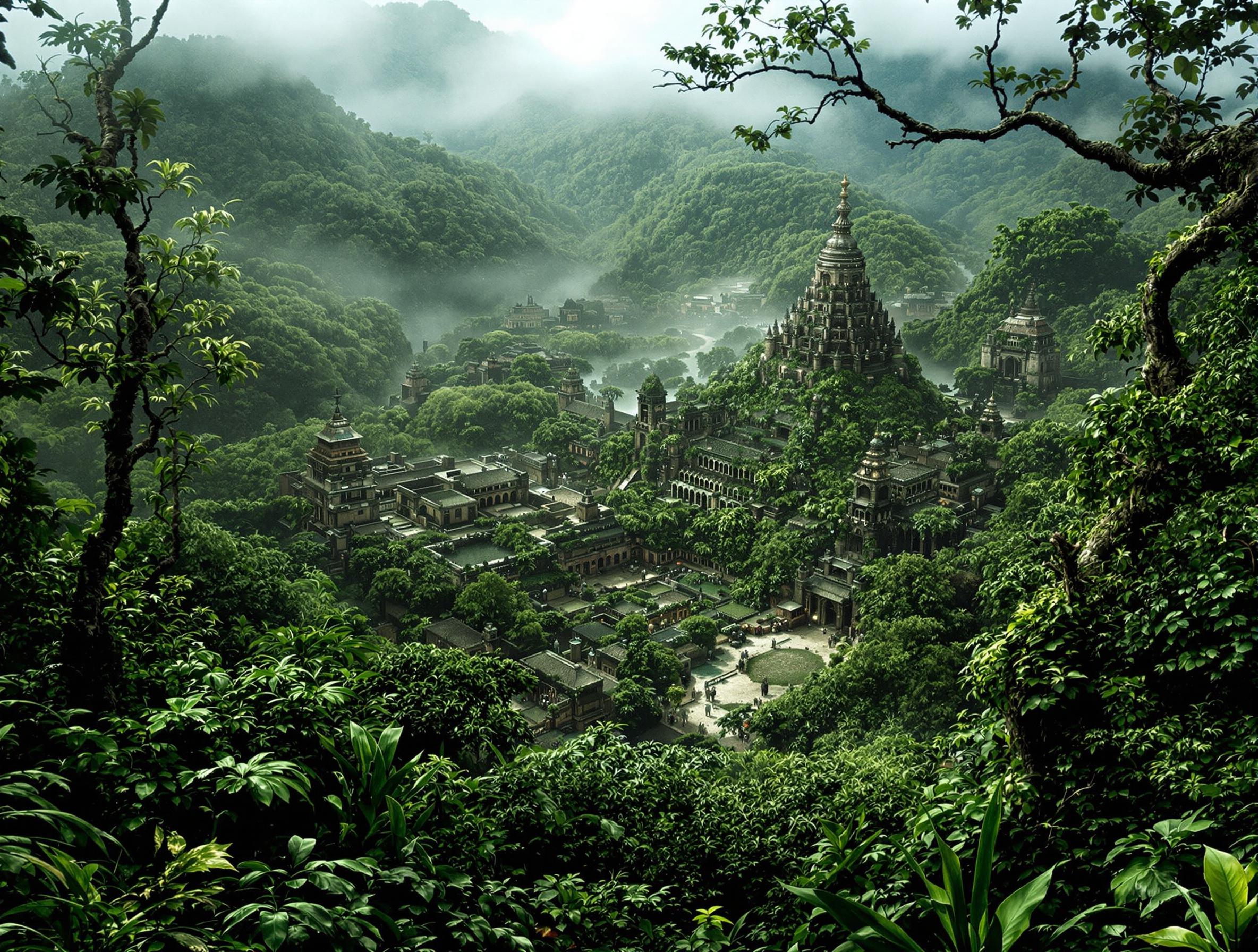Introduction – The Mirage Among the Vines
In the wild heart of the Amazon rainforest, where light barely filters through the canopy and the earth still conceals countless secrets, the legend of a forgotten city lingers—as ancient as it is elusive: the Lost City of Z. A simple, enigmatic name, yet one laden with promise for explorers, dreamers, and archaeologists alike.
“Z” is more than just a point on an undrawn map; it is a symbol of hope that, hidden among the jungle mists, traces of a forgotten civilization might still exist—one more advanced than mainstream archaeology is willing to admit.
It almost sounds like the opening of an Indiana Jones film—mystery, impenetrable jungles, forgotten peoples. But this is no fiction. It is the prelude to a true story. And its protagonist is not a celluloid hero, but a flesh-and-blood man: Colonel Percy Harrison Fawcett, the British explorer who dedicated his life—and perhaps lost it—pursuing this vision.
Percy Fawcett: The Man Obsessed with the Mystery
Embodying this obsession was Colonel Percy Harrison Fawcett, an army officer, cartographer, and adventurer. Born in 1867, Fawcett was a man of his time, yet his gaze was fixed on something greater. After several mapping missions for the Royal Geographical Society, he became convinced that in the heart of the Amazon rainforest lay an ancient city, the remnant of a forgotten civilization that was both technologically advanced and spiritually evolved.
This idea took shape after he read the Manuscript 512, an 18th-century document housed in the National Library of Rio de Janeiro. In it, a Portuguese explorer described a vast ruined city discovered in the Brazilian forest, with stone structures, monumental arches, a central statue, and symbols that appeared pre-Columbian.
Fawcett named this city “Z.” For him, it was not a legend; it was a real place, and it had to be found.

Fawcett in the Amazon during one of his expeditions
Historical and Cultural Context: The Age of Exploration and Lost Civilizations
The Era of Great Explorations
Percy Fawcett lived in a time when Europe was captivated by exploration and geographical discovery. The late 19th and early 20th centuries were marked by a race to explore unknown territories, driven by the desire to expand empires, acquire new resources, and satisfy scientific curiosity. The Royal Geographical Society, of which Fawcett was a member, played a pivotal role in these endeavors, sponsoring expeditions to Africa, Asia, and South America. In this climate, the idea of discovering a lost civilization in the heart of the Amazon rainforest seemed not only plausible but a challenge worth undertaking.
Cultural and Literary Influences
The Victorian and Edwardian eras were also a time of great cultural ferment, with a growing fascination for ancient civilizations and exotic legends. Novels like H. Rider Haggard’s King Solomon’s Mines and Arthur Conan Doyle’s The Lost World fueled the collective imagination with tales of unexplored lands and forgotten cities. Fawcett himself was a friend of Conan Doyle, and it is said that his experiences inspired The Lost World. These literary influences, combined with his personal convictions, may have strengthened his determination to seek the mythical Lost City of Z.
Manuscript 512 and Local Legends
Another factor that fueled Fawcett’s conviction was Manuscript 512, an 18th-century document housed in the National Library of Rio de Janeiro. In it, a Portuguese explorer described a ruined city discovered in the Brazilian forest, with stone structures, monumental arches, and engraved symbols. This manuscript, along with local legends and indigenous stories, gave Fawcett further reason to believe in the existence of an advanced civilization hidden in the Amazon rainforest.
A True Explorer, Not Just a Visionary
Although today he is remembered primarily for his disappearance and seemingly far-fetched theories, Percy Fawcett was far from being a mere dreamer. Before his obsession with the Lost City of Z, he distinguished himself as a successful explorer and respected cartographer.
During his expeditions in South America, he made significant contributions to mapping the border between Brazil and Bolivia, in regions then completely unexplored. He was decorated for his topographical surveying skills, and his scientific observations were considered extremely accurate by the Royal Geographical Society. Some of his discoveries were later confirmed, proving his talent.
An Inspiration for Indiana Jones?
Although there are no official sources confirming a direct link, many scholars and film enthusiasts believe that Percy Fawcett inspired the most famous archaeologist-adventurer in cinema history: Indiana Jones.
His wide-brimmed hat, pistol at his side, and expeditions to exotic lands in search of lost civilizations—everything in Fawcett’s biography seems to foreshadow the style and spirit of the iconic character played by Harrison Ford. The coincidence is too perfect to ignore, even if it remains in the realm of suggestion.
The Final Expedition
In 1925, Fawcett embarked on his most ambitious expedition, accompanied by his son Jack and his friend Raleigh Rimmell. They entered the Amazon rainforest via the Mato Grosso, leaving their last known message near the Tapirapé River. From that moment, they vanished without a trace.
No survivors. No diary. Only silence and the jungle. In the decades that followed, over 100 rescue expeditions were organized, some of which also disappeared. Theories multiplied: attacks by indigenous tribes, tropical diseases, internal betrayals. But no definitive evidence was ever found.
Forgotten Amazonian Civilizations?
For years, the scientific community dismissed Fawcett’s theories as colonial fantasy. It was believed that the Amazon rainforest was inhabited only by small nomadic groups, incapable of developing complex societies. Yet, in the last two decades, this view has been radically challenged.
At the archaeological site of Kuhikugu, near the Xingu River, scientists discovered the remains of an ancient city with dwellings, fortifications, roads, and complex hydraulic systems, dating back centuries before the arrival of Europeans. According to archaeologist Michael Heckenberger, these discoveries prove that the Amazon rainforest was not “empty”; it was inhabited by sophisticated, organized civilizations with a deep connection to their environment.
In other words, Fawcett’s “Z” may not have been an illusion but an early intuition of a truth that science is only now beginning to confirm.
A City That Became Legend
The myth of the Lost City of Z has transcended time. It has become the subject of books, documentaries, and urban legends. In 2009, journalist David Grann published The Lost City of Z, reconstructing Fawcett’s story and interweaving it with new archaeological discoveries. The book became a bestseller and was adapted into a film directed by James Gray in 2016.
But the legend lives on, especially in the jungle. Even today, some elders of local tribes speak of a hidden city, covered by the forest, with walls that glow in the moonlight. A city that refuses to be found… except by those willing to lose themselves.
The Call of “Z”
Perhaps Z is not a physical place. Perhaps it is an idea, a dream, an archetype: the search for what is forgotten, the desire to push beyond the boundaries of the known world. Or perhaps, somewhere in the heart of Brazil, there truly lies a city wrapped in time, still intact among the roots and waters.
Percy Fawcett never returned. But his obsession left a legacy: the certainty that the world, even today, is not entirely mapped. And that there are places where mystery still survives.
Sources:








Leave a Comment